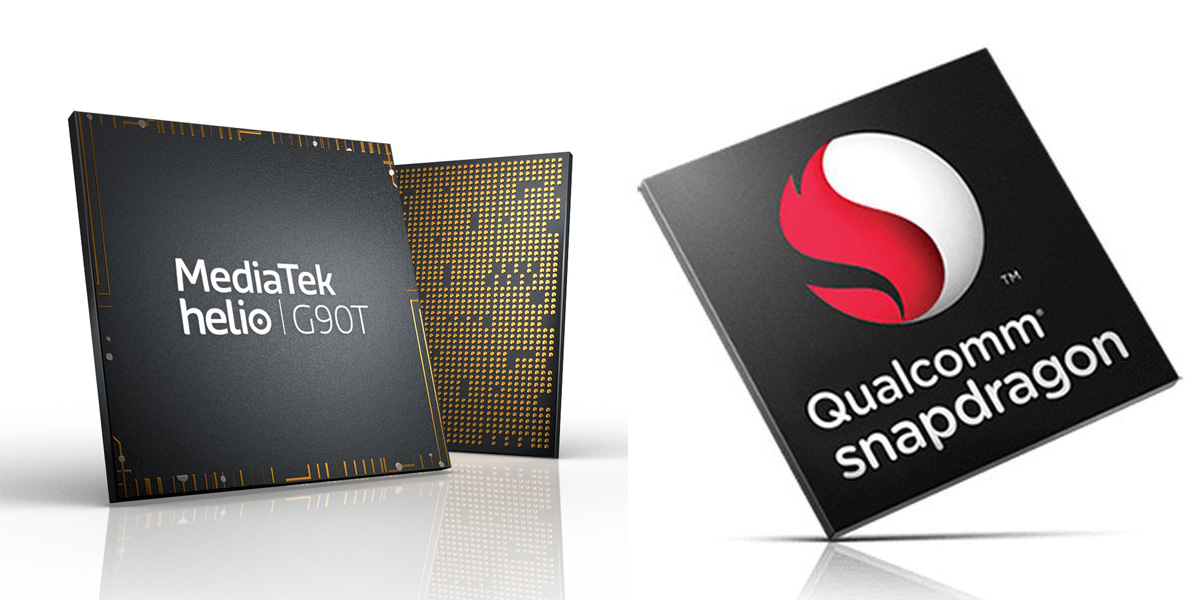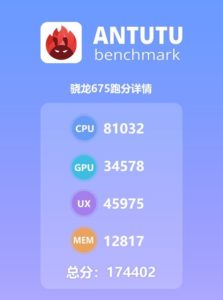After a long time, MediaTek is finally back in the powerful chipsets segment. And its comeback is through a gaming-centric smartphone processor: the Helio G90T. The Redmi Note 8 Pro will be the first smartphone to be equipped with the new chipset. But it is not alone: even Qualcomm recently launched a mid-range chipset made specifically for gamers: it is the Snapdragon 730G and it is the most amazing Qualcomm chipset just below the Snapdragon 8xx series. Given that important phones are hitting the market with these two chipsets and that they are currently the only mobile processors made for gamers with a G in their name, we decided to make an in-depth specs comparison in order to let you know which one will provide the best gaming experience.
Helio G90T vs Snapdragon 730G

Qualcomm and MediaTek’s history with powerful SoCs
Qualcomm is currently the leader of mobile chipsets. The best Android flagships out there are powered by Qualcomm’s high-end chipset from the Snapdragon 8xx series. Due to Qualcomm’s domination, MediaTek was forced to exit the high-end mobile processor segment in 2017, after releasing the Helio X30. And now it is trying to come back again with the Helio G90T. So it has to face a lot of prejudices and it is in a disadvantaged position compared to Qualcomm.
MediaTek Helio G90T vs Qualcomm Snapdragon 730G Specs Comparison
| MediaTek Helio G90T | Qualcomm Snapdragon 730G | |
|---|---|---|
| CPU | octa-core – 4x ARM Cortex A55, Clock frequency: up to 2.05 GHz +
4x Cortex A76, Clock frequency: up to 2.05 GHz – 12 nm, 64 bit
|
octa-core – 8x Kryo 470
(2 x Kryo 470 Gold – Cortex A76 Clock frequency: Up to 2.2 GHz + 6 x Kryo 470 Silver – Cortex A55 Clock frequency: Up to 1.8 GHz) 8 nm, 64 bit |
| GPU | Mali G76 3EEMC4 800 MHz | Adreno 618 |
| Camera | Up to 24 + 16 MP dual cameras Up to 64 MP single camera |
Up to 192 MP single camera Up to 22 MP dual cameras |
| Video features | Up to 4K Ultra HD at 30 fps | Up to 4K Ultra HD at 30 fps (video recording) Up to 4K Ultra HD (video playback) |
| Display | Up to Full HD+ | Up to Quad HD 3360 x 1440 pixels |
| Connectivity | Wi-Fi 5 Bluetooth 5.0 Cellular Modem: LTE Cat.12 Download, Cat.13 Upload |
Wi-Fi 5. Bluetooth 5.0 NFC Cellular Modem: Snapdragon X15 LTE, up to 800 Mbps, upload speed up to 150 Mbps |
| Memory | Up to 10 GB, dual-channel LPDDR4X at 2133 MHz eMMC 5.1 / UFS 2.1 internal storage |
LPDDR4X |
| Location | GPS, GLONASS, Beidou, Galileo | GPS, GLONASS, Beidou, Galileo, QZSS, SBAS |
| Battery Charging | Fast battery charging | Qualcomm Quick Charge 4+ |
Helio G90T vs Snapdragon 730G: Benchmark scores

According to leaked AnTuTu tests, MediaTek Helio G90T reached a total score of 281,033 points. That is simply amazing and it is very close to flagship chipsets. Further, it is a way better result than Snapdragon 730G which just reached 220,000 points. However, this does not mean that Helio G90T will be better for gaming.

The Adreno 618 GPU on board of the Snapdragon 730G scored 66,398 points on AnTuTu, while Helio G90T scored 79,755 points: we got the answer. According to benchmarks, Helio G90T has better performance than its rival even in its graphic performances. And note that Snapdragon 730G already has 15 percent better graphics performance than Snapdragon 710! However, despite being incredibly powerful and gaming-centric chipsets, both Snapdragon 730G and Helio G90T remain midrange processors. Indeed, you can get better performances in both gaming, daily use and multi-tasking with Snapdragon SoCs from the new 800 series.


Power efficiency: will the battery last longer?
Qualcomm Snapdragon 730G is built at 8 nm: a very efficient production process which reduces energy consumption significantly. So it will be a very efficient SoC and it should help batteries last long on a single charge. On the other hand, MediaTek Helio G90T is built at 12 nm, which isn’t a very efficient process. So the Helio G90T will boast amazing performances, but it will not be very efficient.
Redmi’s Lu Weibing said the Helio G90T is even less power efficient than Snapdragon 710 by around 10 percent. That is why Xiaomi opted for a bigger battery on the Redmi Note 8 Pro.
MediaTek’s reputation: should you trust it and give it a chance?
I saw a lot of people saying that they will not buy the Redmi Note 8 Pro because it is powered by a MediaTek chipset. After the excellent success garnered by Qualcomm and the poor performances of some old MediaTek chipsets, a lot of people have lost their trust in MediaTek. This is also why it was forced to exit the high-end chipsets segment.
But now we think MediaTek is releasing a lot of interesting processors, including the Helio G90T. This chipset is far from being the best out there, especially for its energy consumption, but we believe it is worth giving a chance to MediaTek due to the very promising specifications of this chipsets as well as its value for money.
- Read More: MediaTek to ramp up R&D and brand awareness as more Chinese OEMs eye the semiconductor industry
Is MediaTek finally better than Qualcomm?
According to benchmarks, the new Helio G90T chipset by MediaTek is way more powerful than the Snapdragon 730G. But this is not enough to say that MediaTek has released a better chipset than every mid-range SoC by Qualcomm.
And we say it essentially for two reasons: first, benchmarks are not the only indicator to measure the overall performance of a chipset. There are other factors too like its performance in long gaming sessions, stability, and energy consumption. Further, the Snapdragon 730G will be a lot more efficient than Helio G90T, so batteries will last longer. Only after trying both of them on well-optimized devices, will we be finally able to tell you whether or not MediaTek did a better job than Qualcomm.
MediaTek Helio G90T
PROS
- Potentially better CPU
- Potentially better GPU
- Better overall performance
- Affordable
CONS
- 12 nm
Qualcomm Snapdragon 730G
PROS
- More efficient
- Better connectivity
- Better camera support
CONS
- Potentially lower performance






